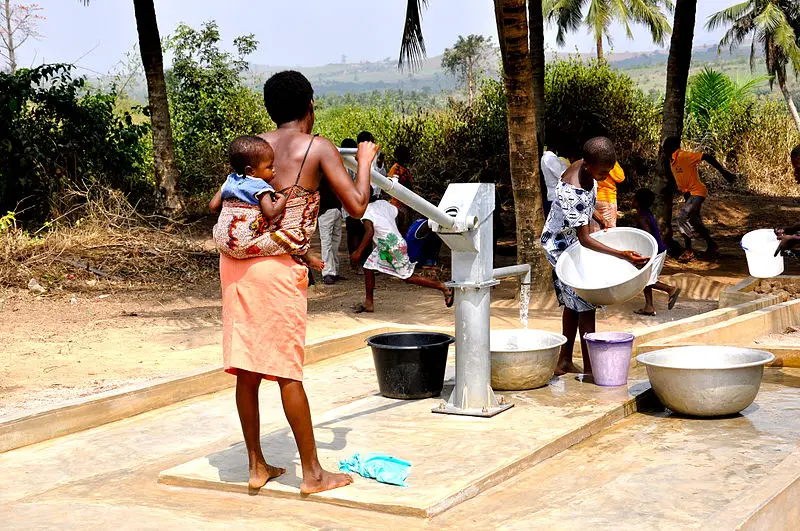While access to drinking water is still a problem for 30% of the world’s population, Africa is still the continent that suffers most from it. The remedy, which must be the result of collective work between local governments, businesses and NGOs, must be accompanied by appropriate technological solutions.
The water issue at Cop23 Cop 23, which took place in Bonn in November 2017, was disappointing in many ways. Donald Trump’s decision to leave the Paris Climate Agreement, despite the United States being the second largest greenhouse gases emitter, has discouraged many of its members.
UN Green Fund
In addition to the very significant environmental impact of the United States, it is also 2 billion dollars destined for the UN Green Fund promised by Barack Obama which disappear de facto. The objective of this Cop 23 was notably to implement the 2015 Paris agreements but unfortunately no concrete decision has been taken. The countries present departed with an agreement to make a collective assessment of their greenhouse gas emissions by the end of 2018.
Access to drinking water, particularly in Africa, was supposed to be a major topic of discussion in Bonn. The “Water for Africa” initiative was born at Cop22, and it was at this last conference in Fiji that it displayed its concrete goals. It was indeed at the time of presenting this initiative that the Secretary of State for Water in Morocco, Charafat Afilal, pointed out that “the share of the African population that will face water stress will rise from 47% in 2000 to 65% in 2025.
“Another observation made at the Cop23 was that the fundamental problem is not lack of water, but rather lack of infrastructure that would enable it to be accessible to all,” said Bai Mass Taal, First Executive Secretary of the African Ministers’ Council on Water (AMCOW).
“The problem today in Africa is that we have water, but people don’t have access to it because we don’t have the infrastructure and it’s expensive to put it in place. When this infrastructure issue is resolved, the water will get to the people,” she added.
Access to water
Access to water in Africa According to the World Health Organization, nearly 4 million people die each year from unsafe water. It is the leading cause of non-age-related mortality. In 2017, WHO and UNICEF jointly published a report on the state of water sanitation services and access to safe drinking water worldwide.
For a Westerner always used to having running water at hand, the figures are impressive: 2.1 billion people, or 30% of the world population, have no safe or potable water at home, 263 million walk more than 30 minutes back and forth to fetch water and 159 million drink water from surface sources such as rivers or lakes. According to the same report, 319 million people in sub-Saharan Africa are deprived of safe drinking water. Efforts therefore should focus on this continent and the recent example of South Africa is very telling.
This year, Cape Town was facing an unprecedented drought that would leave 4 million people without access to water. The authorities had set up a countdown with a D-day that went from mid-April to mid-July.
Thanks to a providential rain in recent months and, above all, to very effective restrictive measures, the South African capital was able to avoid the worst drought in its history. The case of Cape Town, as telling as it is, contradicts the disparity that exists between cities and rural areas in terms of water access.
Across sub-Saharan Africa, 52 million people lack access to improved water in urban areas and 270 million in rural areas. The reason is simple: vast tracts of rural land in Africa do not have the infrastructure needed to harvest, treat and convey water to the populations. Technological Solutions There is no shortage of water in Africa’s water tables, and it is indeed a technology appropriate for the vast extent of the continent’s territories that is lacking. The conclusion is unanimous yet remains the implementation of new solutions to make what has been recognized as a human right, access to drinking water, a reality for all.
Plant Packages
There is no shortage of possibilities. In Kenya more than 80,000 people no longer must travel long distances for water supply, thanks to a 13 km pipeline built by the government in partnership with the Red Cross. Some international corporations have also decided to focus on the water issue in Africa. Veolia Water Technologies, a division of the French multinational Veolia, has for example launched a program called “Ambitions for Africa” which employs more than 1,000 people on the continent to develop the company’s local presence and enable it to offer technological tailor-made solutions adapted to African needs.
The company has set up Plant Packages, which are in fact modular systems that make it possible to travel to remote areas far from any city and electrical infrastructure to treat water locally to make it immediately accessible to rural populations. Other innovative solutions are also being developed, such as the WaterSeer system created by VICI labs in the United States.
This system makes it possible to collect water from the atmosphere and store it in a well accessible simply with a pump. Under the right conditions, this easy-to-install system can collect up to 37 liters of water per day. Wetlands maintenance and reforestation, which are long-term efforts, are also projects which authorities, businesses and NGOs must commit themselves to.
Last February, Congo’s Minister of Tourism and Environment, Arlette Soudan-Nonault, reaffirmed her government’s commitment to implementing the Ramsar Convention adopted in 1971. This initiative brings together more than 150 countries in their desire to halt the disappearance of wetlands throughout the world. On this occasion, she reminded everyone of the primordial role wetlands play in replenishing drinking water reserves.

